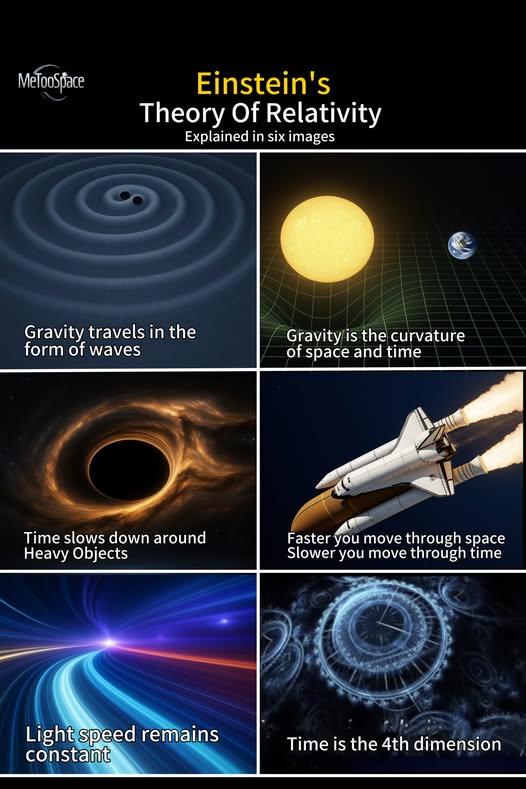
Albert Einstein’s Theory of Relativity is one of the most profound and influential scientific theories of the 20th century. It fundamentally changed our understanding of space, time, gravity, and the universe. The theory is actually made up of two interrelated theories: Special Relativity and General Relativity.
1. Special Relativity (1905)
Einstein introduced Special Relativity in 1905 through his paper “On the Electrodynamics of Moving Bodies.” This theory focuses on the physics of objects moving at constant speeds, especially those moving close to the speed of light.
Key Principles:
The Laws of Physics Are the Same for All Inertial Observers: This means that whether you’re stationary or moving at a constant speed, the basic laws of physics don’t change.
The Speed of Light Is Constant: No matter how fast you’re moving or in what direction, the speed of light in a vacuum is always the same—approximately 299,792 kilometers per second (186,282 miles per second).
Major Consequences:
Time Dilation: Time passes more slowly for an object in motion relative to a stationary observer.
Length Contraction: Objects in motion are measured to be shorter in the direction of motion by a stationary observer.
Mass-Energy Equivalence: Expressed by the famous equation E = mc², this shows that mass and energy are interchangeable.
2. General Relativity (1915)
A decade after Special Relativity, Einstein published General Relativity, which extended the principles to include gravity and accelerated motion.
Key Principles:
Gravity as Curved Spacetime: Instead of viewing gravity as a force between masses (as Newton did), General Relativity describes gravity as a result of the curvature of spacetime caused by mass and energy.
Equivalence Principle: The effects of gravity are indistinguishable from the effects of acceleration. This principle helped Einstein realize that gravity could be modeled as the geometry of spacetime.
Predictions and Effects:
Gravitational Time Dilation: Time runs more slowly in stronger gravitational fields.
Bending of Light by Gravity: Light bends when it passes near a massive object—a prediction confirmed during the 1919 solar eclipse.
Black Holes and Gravitational Waves: General Relativity predicts the existence of black holes and ripples in spacetime called gravitational waves, which were first directly detected in 2015.
